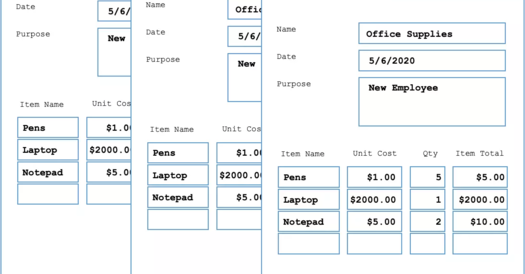We’re sometimes asked about whether you can use WEBCON BPS to review files being kept in SharePoint document libraries. The short answer is “yes, of course,” but the nuanced answer is closer to “yes, but do you really want to do that?”


Is it really always all about documents?
If you live in SharePoint-land (and this includes Teams), you’re rewarded for thinking that The Document Is The Thing. The unit of work, the deliverable, the work product – it’s a document.
And that’s limiting. Here’s why:
- One document might be limiting. There might be several documents involved in the process of getting something accomplished.
- The SharePoint team themselves realized this could be a problem, and that’s why they introduced Document Sets several years ago. They do help with this particular issue – up to a point.
- A document might be used to trigger a great deal of additional derivative activity. If you only focus on the document, the resultant activity is either lost or disconnected. For example:
- Was the document published somewhere? If so, where, and by whom?
- Was it used as a contract for a business agreement? What resulted from that?
- A document might be the result of a great deal of activity, and focusing only on the document runs the risk of discarding a lot of work leading up to the creation of a document. For example:
- Who requested that a document be created?
- Who contributed to writing it?
- How long did it take to produce it?
- How many times did it bounce back and forth between editor and author until it was deemed acceptable?
- The audit trail around a document, other related documents, the request to create it and the reason for doing so, the review process it went through, and the way it was used once finalized, might need to be treated like one aggregate record. Discarding any of this information and being left with just the document itself could be a loss of knowledge at best, a violation of the law at worst.
Now sometimes, yes, the document really, truly, genuinely is the thing. But let’s return to situations where the document is part of a bigger picture.
Cases
We’re really talking about cases. Cases have goals, members, roles, histories, outcomes, and assets. We need to treat that stuff as a set. Apply permissions as a set. Version it as a set. Audit it as a set. Archive it as a set. Dispose of it as a set.
WEBCON BPS treats every workflow instance as a case. You can think of it as a “Document Set++” if that helps. Document sets already have set-level fields and one collection of attachments. Imagine if they also included:
- Multiple sublists of detail data (expenditures, time logged working on the case, etc.).
- Email attachments.
- A running comment log.
- Cached data fetched from external sources.
- A complete audit history.
- One set of permissions for all of this.
- A custom form layout for displaying all of this.
- A set of assigned roles, role occupants, and surrogates if/when occupants aren’t available.
That’s what’s in a WEBCON BPS case.
Even if it’s in WEBCON BPS, it’s still in Microsoft 365
If it’s really about individual documents, great. Secure them individually, archive them individually, index them for searching individually, etc.
If, however, the case is the real unit of work, you might want to use WEBCON BPS cases as document containers. It need not be in conflict with your Microsoft 365 strategy at all:
- Case lists (they’re called Reports in the WEBCON BPS UI) can be displayed inside of SharePoint sites (as Web Parts) and Teams workspaces (as tabs).
- Cases and their contents can be indexed by Microsoft Search and can appear in the search results page to which you’ve become accustomed.
- Documents attached to cases can be edited by Office applications.
- Permissions to WEBCON BPS cases are granted to the same Azure Active Directory you’re using with Microsoft 365 (or the same Windows Active Directory you’re using with SharePoint Server).
- Even if you keep cases together, you can still treat a SharePoint document library as a publishing target for finished documents. You’ll be keeping two copies around, but one is more about work product history and one is more about widespread consumption.
WEBCON BPS cases essentially add a better process engine and a fit-for-task case store to your existing environment.
What about when it really is all about the document?
Even when the document is “the thing,” it still leaves its SharePoint library from time to time. When you edit it, you’re copying it to your local machine to work on it, putting a new version back in the library later.
Handling a document during a review is no different. WEBCON BPS can create a review case, attach a copy of the primary document to it, run through a process, and then check in any changes when the review completes.
To keep the SharePoint site apprised of the review progress, you can add a column to a SharePoint document library and integrate it with a WEBCON BPS review process in a matter of seconds – exactly like SharePoint expects.
As with everything, “it depends”
Yes, “it depends,” but what it depends upon is pretty straightforward. And no matter the case (pun not intended), WEBCON BPS is here to help.
If you’d like to see more on this topic, we’ve prepared a video devoted to this topic you can below.









